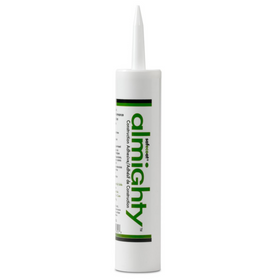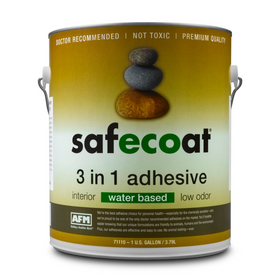
Sustainable Decking Materials Guide (with Prices)
Last Updated: Mar 19, 2025As more and more of our jobs move indoors and in front of screens, we’re living a more sedentary lifestyle than ever before. But we, humans, still crave that time outside in nature. An easily accessible outdoor space like a deck or patio provides the perfect escape to enjoy your morning coffee with the birds and close the day with a family picnic dinner while watching the sunset. Whether you prefer a big wrap around deck with railings and rocking chairs or a wide space for entertaining and BBQing in the back, a deck or patio makes a wonderful space to enjoy nature.
The New York State Department of Environmental Conservation states that just five minutes outside has the power to improve your health by boosting mood and immune system, lowering blood pressure and reducing stress, increasing focus and energy level, and even help you sleep better at night.
Table of Contents
- Natural Wood Decks
- What is Cedar Decking?
- How Much Does Cedar Decking Cost?
- What is Redwood Decking?
- How Much Does Redwood Decking Cost?
- What is Bamboo Decking?
- How Much Does Bamboo Decking Cost?
- What is Treated Lumber Decking?
- How Much Does Treated Lumber Decking Cost?
- What is Thermally Modified Wood Decking?
- How Much Does Thermally Modified Wood Decking Cost?
- What is Vinyl Decking?
- How Much Does Vinyl Decking Cost?
- What is Reclaimed Decking?
- How Much Does Reclaimed Decking Cost?
- What is Composite Decking?
- How Much Does Composite Decking Cost?
- What is Aluminum Decking?
- How Much Does Aluminum Decking Cost?
- What is HDPE Recycled Plastic Decking?
- How Much Does Recycled Plastic Decking Cost?
- Building a Sustainable Deck or Patio

Natural Wood Decks
When most of us think about sustainable, environmentally friendly decking materials, our thoughts go straight to good old wood. After all, it’s just about the most natural resource available for such building projects. Wood is a renewable material, can be recycled, stained, and painted, but wood sourcing is where things get fuzzy. If you must have a new real wood deck, be sure only to source locally grown and sustainably harvested wood.
But due to over-harvesting, the use of fossil fuels in transporting, and unethical procedures, wood may not be the most sustainable option for your new patio. Join us today as we explore the variety of options in decking solutions.

What is Cedar Decking?
Cedar is a beautiful wood that naturally resists decay and insect infestation. Boards can be purchased in various colors and widths and can be stained, sanded, cut, and painted for just the right look.
Cedar is a natural, renewable decking option, but be sure to source only cedar that has been locally and sustainably harvested. Cedar decking requires yearly maintenance to seal the wood and protect it from the environment. Whenever possible, source reclaimed wood.
How Much Does Cedar Decking Cost?
Cedar decking runs approximately $4.16 - $9.24 per linear foot for materials only. Installation and labor vary based on your location and range between $20 to $40 per square foot.

What is Redwood Decking?
Everyone loves redwood for its deep, rich red tones. But because the best redwood for building comes only from old-growth redwood trees, supply is extremely limited.
If you must have redwood, look for reclaimed or recycled options. Many old barns, buildings, barrels, and water tanks were built from redwood and, as they’re torn down and/or replaced, that wood becomes available for resale.
How Much Does Redwood Decking Cost?
Reclaimed redwood varies greatly in price. Those on the west coast where redwood trees grow will generally find recycled redwood in good condition for $4 – 7 per linear foot, while those in the east may see much higher quotes. This price does not include installation or labor, which will vary based on location.
What is Bamboo Decking?
Bamboo is a newer option in sustainable building solutions in North America but has been used in Asia for thousands of years. Bamboo is both hardwearing and easy to maintain but will rot in rainy climates without proper sealant. Bamboo is available in strand woven and unwoven, woven being your strongest choice for deck building. The big drawback to this type of decking is that it is typically procured from Asia, which gives it a much higher footprint than locally sourced wood.
How Much Does Bamboo Decking Cost?
Bamboo decking ranges from $6.25 to - 10.93 per square foot for material only. Product availability and labor costs will vary based on location.

What is Treated Lumber Decking?
Treated lumber is an excellent decking solution that resists rot, mold, and insects. It’s an especially good choice for those in wet, forested areas where local wood is in limited supply. Treated wood, however, does contain potentially toxic chemicals used to strengthen it. As we’ve become more aware of the effects of such chemicals, responsible companies have replaced toxic ingredients with less harmful alternatives that maintain the same strength and longevity.
If choosing to build with treated lumber, don’t be afraid to ask questions to make the best decision about your decking material. And remember, treated wood can’t be recycled, so use materials sparingly.
How Much Does Treated Lumber Decking Cost?
Treated lumber will cost you about $1.56 - 3.12 per square foot, for material only. This type of lumber is readily accessible at most lumber yards but installation and labor will vary based on your location.

What is Thermally Modified Wood Decking?
Thermally modified wood decking is a reasonably new option to North America that has been popular in Europe for many years. The wood is super-heated until its structure changes, producing a wood product that is naturally durable and resistant to water, insects, mold, and decay. It's considered a healthier alternative to toxic chemically treated wood. Thermally treated wood decking should last up to 30 years. Untreated thermally modified wood used outdoors will fade to a grayish color. To avoid this, it should be treated with a non-toxic, natural oil-based preservative.
How Much Does Thermally Modified Wood Decking Cost?
Thermally modified wood will run you about $8 - $10 per square foot for the material. Thermally modified wood falls between the cost of pressure-treated decking and composite decking. Pricing may vary based on your location, as thermally modified wood decking is available directly from the manufacturer or specialty suppliers.
How Much Does Vinyl Decking Cost?
The average cost of vinyl decking differs between manufacturers. It's important to learn about the product's manufacturing process, from a sustainability perspective, and the warranty. Most manufactures offer warranties between 10 and 15 years and cover uncommon issues such as craving or fading.
Building Materials
Shop high-performance building materials that are vetted for benefits to your health, your pocketbook, and the planet.

AFM Safecoat Almighty Adhesive Case of 12
AFM Safecoat
In Stock

AFM Safecoat 3 in 1 Adhesive
AFM Safecoat
In Stock

Quickscrews Cabinet Install Screws
Quickscrews
In Stock

AFM Safecoat Metalcoat Primer
AFM Safecoat
In Stock

AutoSlide Automatic Sliding Door System
Autoslide
Out of Stock
2 Colors

Autoslide Smart Tag Pet Door Kit
Autoslide
Out of Stock
2 Colors

AutoSlide Elite iLock Smart Tag Pet Door System
Autoslide
Out of Stock
2 Colors

Quickscrews Pan Head Pocket Hole Screws
Quickscrews
In Stock

Autoslide Elite Smart Tag Pet Door Kit
Autoslide
Out of Stock
2 Colors

Autoslide Motion Activated Pet Door System
Autoslide
Out of Stock
2 Colors

What is Composite Decking?
Composite decking combines the desire for a natural wood deck with the need for environmentally friendly solutions by blending recycled plastics with wood fiber to create a new material. Composite decks are long-lasting and require little maintenance, unlike natural wood, and won’t stain either. Unfortunately, we’ve not yet found a reliable method for recycling composite materials so plan to use your composite deck for as long as possible and always plan to repurpose materials.
How Much Does Composite Decking Cost?
Composite decking costs approximately $4 to $9 per square foot. Pricing and labor will vary based on your location, the type and quality of composite you select.
What is Aluminum Decking?
You’ve heard about using aluminum for siding and roofing, but did you know it could also be used for decking? Aluminum is an increasingly popular sustainable building material for its low cost and versatility and looks great in both modern and rustic applications. Aluminum decking materials are sold in interlocking pieces that, when put together, are watertight and require absolutely no coating or sealing. They can be bought or finished to look like wood and remain cool to the touch, even under direct sunlight.
How Much Does Aluminum Decking Cost?
Aluminum decking runs from $12 to $15 per square foot, with an average cost of $13 per square foot. The cost of aluminum decking and labor with vary based on your location.

What is HDPE Recycled Plastic Decking?
Recycled plastic decking, or HDPE (high-Density Polyethylene Resin), is another option in sustainable decking that looks just like wood but doesn’t require cutting down trees either. HDPE is made from recycled plastic and the same stuff used to make gallon plastic milk jugs. Look for options made of at least 50% post-consumer waste products for the smallest footprint.
HDPE is available in a variety of styles and colors to fit any look or environment and can be worked with just like natural wood. But because it’s made of plastic, recycled plastic decks are best installed in low-load environments and should be supplemented with more rigid materials at joints and posts.
How Much Does Recycled Plastic Decking Cost?
Recycled plastic decking, or HDPE (high-Density Polyethylene Resin) can be purchased new from $2.16 to $8.92 per square foot. The availability and cost of installation will vary based on your location.
Building a Sustainable Deck or Patio
The options are endless in building outdoor entertaining spaces, but it makes the most sense to source sustainable materials to ground your feet as you transition from indoors to nature.
Before starting your deck project, consider the local available options in sustainable building materials, starting with reclaimed and recycled options. You may just be surprised with what’s readily available!
Laura Bourland
Laura grew up in the California suburbs, far removed from environmentalism, but nature always has a way. She uprooted her life in 2015, moving to the countryside of Washington to live a more sustainable and simple life on 12 acres. She and her fiancee are learning on the job as they attempt everything from gardening and natural pest control to eco-friendly building and home improvement.




